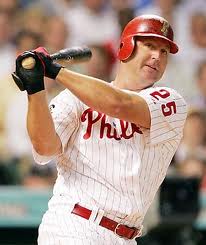 The Vassar College Brewers didn’t have a pinch-hit hit this past year. We were just 0 for 5, but for my career our Division 3 program is now 0 for 11 and in many of the at bats, the hitter has looked overmatched. I maintain that the hardest thing to do in any sport ever is hit a baseball after sitting there for two hours watching what at times can be a boring game. Guys come in off the bench, cold, having not seen a live pitch all day and are expected to produce in a clutch situation. The result can be a strikeout more often than otherwise. Truth be told, I really have no idea how effective pinch hitters are in the Majors and I’d like to know. So with that in mind, next time you’re watching a National League game and the manager pinch hits that left handed batter off the bench for the tiring starting pitcher, consider this:
The Vassar College Brewers didn’t have a pinch-hit hit this past year. We were just 0 for 5, but for my career our Division 3 program is now 0 for 11 and in many of the at bats, the hitter has looked overmatched. I maintain that the hardest thing to do in any sport ever is hit a baseball after sitting there for two hours watching what at times can be a boring game. Guys come in off the bench, cold, having not seen a live pitch all day and are expected to produce in a clutch situation. The result can be a strikeout more often than otherwise. Truth be told, I really have no idea how effective pinch hitters are in the Majors and I’d like to know. So with that in mind, next time you’re watching a National League game and the manager pinch hits that left handed batter off the bench for the tiring starting pitcher, consider this:
According to ESPN data, found here, the major league average for pinch hitters is .224. Contrast this with the .250 average thus far in the 2012 season and one begins to see that pinch hitters fair worse than their comrades, but there’s some data that may confound this. National League pinch hitters (the guys who are more comfortable pinch hitting) are hitting at a .251 clip while their AL counterparts are an Albert Pujols-esque .194. Furthermore, the National League batting average right now is .249, so pinch hitters are higher overall than the regular lineup in the NL. Take pitchers out of the NL “regular lineup” and you likely find that that average climbs over the pinch hitter average.
Still, I wondered what good pinch hitting meant for a National League team. Turns out not so much. The Padres have the worst record in the National League and the second fewest runs scored but lead the league while pinch hitting at a .358 clip. Meanwhile, the Rangers are on pace to score the tenth most runs in a season since 1940 and have pinch hit a cumulative .105.
The pattern continues beyond 2012. In 2011, pinch hitters hit a combined .214 while the major league average was .255. 2010, MLB average was .257 while pinch hitters hit at a .212 clip.
So why pinch hit? In the National League, it makes far too much sense. NL pitchers are hitting a robust .113 thus far in 2012 and hit .142 last year (interesting side note, in 2011, in interleague play, the Orioles’ pitchers hit .409). In the American League, the pinch hitting idea seems dumb. I get that you give some guys a day off, but then want him to pinch hit with the game on the line in the bottom of the ninth, but it doesn’t work. Consider, Babe Ruth only hit .194 in his pinch hit opportunities.
Not all pinch hitters are bad. Greg Dobbs made a name for himself providing power off the bench and Eric Hinske is trying to do just that at this stage in his career. Meanwhile, Jim Thome has found a niche in the role. As has Jason Giambi. Still, remember that when the fabled veteran walks to the plate with the game on the line as a pinch hitter, there’s at least a 75% chance that he gets out. Still, baseball is awesome because we always believe that every time is the 25%, the once in a lifetime, the holy-crap-that’s-awesome-and-it-just-happened moment until we’re left disappointed. American League fans are left disappointed more often than National League fans, but both shouldn’t get their hopes up too high on a pinch hitter as they’re significantly worse than those who started the game.
-Sean Morash














